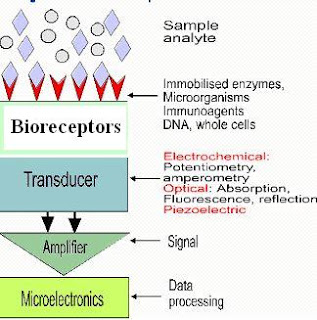Introduction
The brighter brains around the world have been looking for
the most effective and cheapest way of communication between different systems
since the time immemorial. Their pursuit for such a solution took them to
materials like silicon to develop semi-conductor based systems that communicate
through a series of hexadecimal values that only machines can understand.
Hence, the design of such systems was the handiwork of a learned few who knew
the systems level programming. Now, the further pursuit has landed them up
before the nature itself. They have found that the chemicals based
communication offers a far superior mode of communication. Most of all, they
provided the eco-friendly solutions that are viable in the long term.

Pursuit of a Sustainable Communication
Since human beings are born into a society, they knew about
the value of communication for a peaceful co-existence. They wanted such a
semblance even in the devices that they make for communication. Many years have
been dedicated and thousands of dollars have been spent to find a viable
option. Till now, the developers were content with the language of digital
communication which radio, television, wireless internet and satellites use for
mutual contacts. This language has come in the forms of cumbersome numbers made
of ones and zeroes. There has to be a lot of infrastructure dedicated to this.
Now, the communication scientists have come forward with a new line of
communication that is quite common in the biochemical world. This new
communication is through a single molecule or a mixture of simple molecules.
Evolution of Biochemical Communication
In nature, a single molecule or a group of molecules can
tell the microbes about the location of the food. Similarly, a plant can
understand when it would be attacked or animals know when it is mating time for
them, etc., with the help of these small molecules that are released from a
source. In a nutshell, the immense amount of information is passed on to other
organisms through the dispersal of these molecules. A group of international scientists,
including Shannon Oslon from Bengaluru-based National Centre for Biological Sciences
(NCBS) have quantified this communication route to develop future nano communication
devices. The team of scientists from the premier research institute of India
has developed a prototype communication device using the pheromones found in moths.
In nature, the female moth releases minute packets of pheromones over several
metres to attract a male for mating.
Designing of Biochemical Communication Device Prototype
The team has developed the electronic components that mimic
four stages of biochemical communication – production, transmission, detection
and processing – to decipher the chemical signal. A tiny micro-reactor produces
a cocktail of communication molecules that have the same characteristics of the
pheromones found in nature. The second stage of the biochemical communication
is mimicked by a small silicon-glass evaporator that disseminates the signal
molecules. This stage replicates the role of glands of a female moth in
spreading the chemical in a regulated manner. When the male moths were exposed
to such a condition in a lab, they behaved like they would in a natural habitat
under similar situations. After finding
the response, the team developed a chemo-receiver to process the signal in a proper
manner. This chemo-receiver is modeled on the olfactory receptor found in a
fruit fly or Drosophila. The software associated with the chemo-receiver is
modeled on the neural activity that gets triggered in the tiny brain of the
fruit fly. These parts worked in unison to provide the same level of response
that is seen natural habitat. With the development of a working prototype, the
days are not that far off wherein people use much cheaper and compact
biochemical devices for effective communication.








